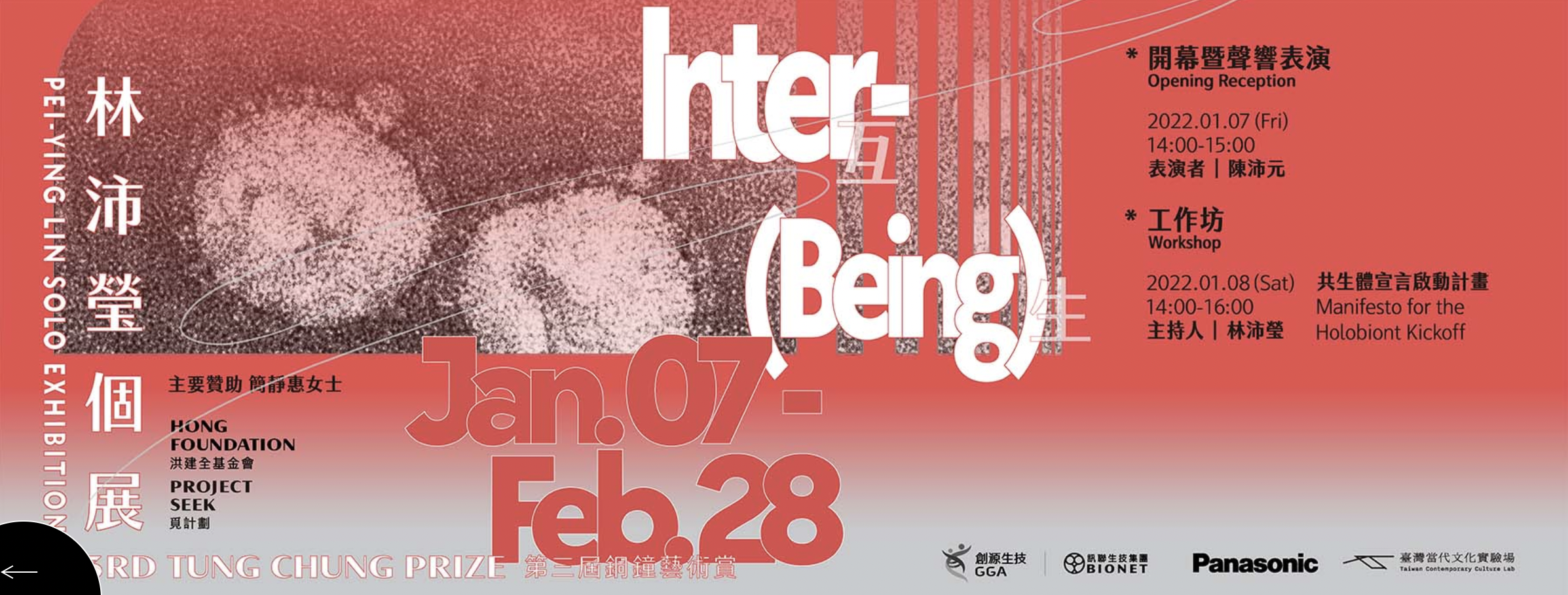7th January – 28th February 2022
C-LAB Art Space lll, Taipei City, Taiwan
More info and booking HERE

Since the COVID-19 pandemic surged in 2020, the world as we knew it underwent total irreversible transformation brought on by a microscopic virus. Transmitting genetic material through the infection process, viruses are also capable of cross-species transmission, effectively challenges the definition of “species” in Linnaean taxonomy. This has led to a movement within the scientific community to rethink the virosphere—that is, the biological environment in which all viruses exist. With scientific proof showing that viruses have fully permeated all corners of our environment, is it possible to examine these biological entities in a cultural context? Has humanity’s attitude towards viruses begun to shift from pushing for their eradication to an acceptance of viruses as an inevitable part of life?
The works of Pei-Ying Lin, recipient of the 3rd Tung Chung Prize, cut across biology, society, culture, and art. At such critical juncture for the future of humankind, she has ventured to highlight the numerous overlapping adversarial or adaptive relationships that exist in the long-term coexistence of humans and viruses as a reflection upon the meaning of life in the universe. Inter-(Being) utilizes viruses as a medium, seen through spiritual, corporal, and behavioral lenses. In Studies of Interbeing – Trance 1:1, a shaman tries to summon the spirit of COVID-19 in a ritual that incorporates religious music and rhythmic movements, with the virus represented as a hand knitted structure that mimics real viral replication process. Studies of Interbeing – Pedigree X is a collaboration using BIONET Corporation’s genetic sequencing technology to explore the possibility that humans may be descendants of microbial families. Discourse of a Viral Boundary is a narrative on the pandemic built from people’s hidden desires and fears about the virus; and the ten basic principles for interspecific symbiosis laid out in Manifesto for the Holobiont in Its Infancy – Human Version outline a new model of coexistence with microbes. Lin utilizes unconventional contexts to examine the virus, and in doing so generates a new understanding of human-viral coexistence.